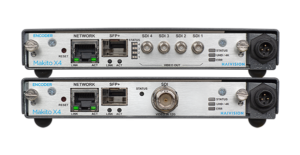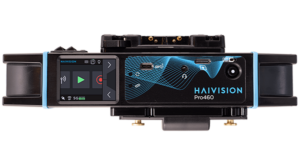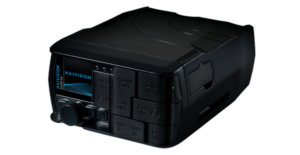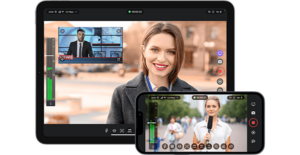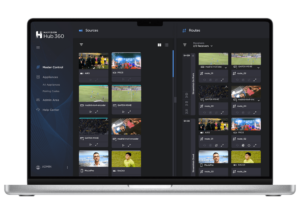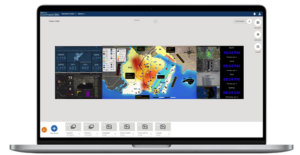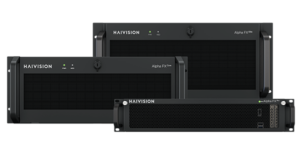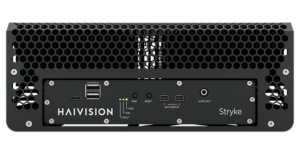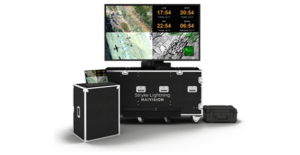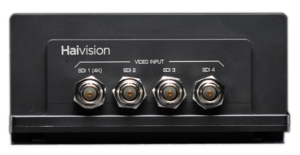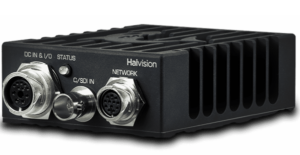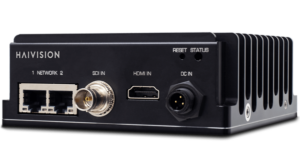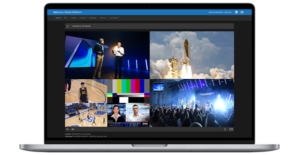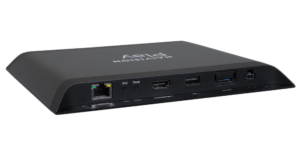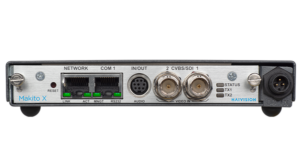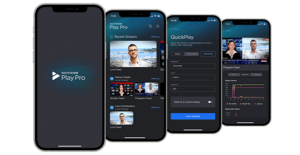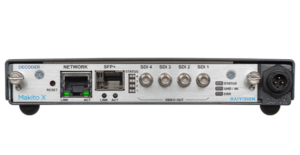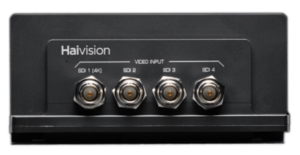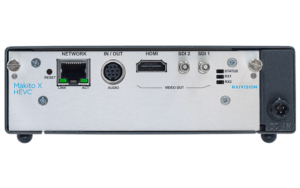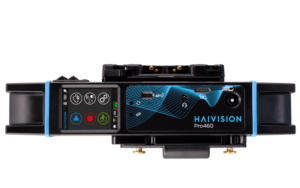What is a Mobile Video Transmitter and What Does it Do?
Haivision’s live broadcast solutions portfolio includes a robust range of mobile IP-based video contribution systems to allow broadcasters to contribute live video from anywhere. In this post, we’ll cover what a bonded cellular or mobile video transmitter is, how it works, how it differs from a fixed or “wired” video encoder, and explore their respective use cases.
What is a Mobile Video Transmitter?
Mobile video encoders with cellular capabilities are often referred to as mobile transmitters, field transmission or production units, video transmitters, or even bonded cellular encoders. It’s a device that enables broadcast video transmission over 4G and 5G cellular networks. Used in challenging or remote environments when IP network connectivity is either unknown or unpredictable, or simply not practical, a mobile video transmitter leverages cellular modems to encode and deliver broadcast-quality video at low latency.
When is Mobile Video Transmitter Used?
In situations where there is access to a reliable private IP network, fixed cameras can be directly connected to broadcast equipment using SDI or Ethernet cables for SMPTE ST-2110 or NDI. When a private network is not an option, but the camera is fixed in one place, then using a real-time video encoder, such as the Makito X4, that supports SRT over the internet can also be a good option. However, if internet access is limited or unavailable, or if a camera needs to be portable, a mobile video transmitter is a perfect choice. Mobile video transmitters offer broadcasters greater flexibility, making it simple to expand their transmission capacities using cellular connectivity for:
- Live Sports – the larger the venue, the harder it is to get cabling everywhere. Whether it’s for skiing, cycling, or car races, mobile video encoders allow broadcasters to deliver remote, multi-camera coverage for enhanced live broadcasts and expanded coverage of events.
- News Gathering – always be “news-ready” with portable, cost-effective, and reliable video solutions that can be easily used from any location around the world.
- Live Entertainment – for music and cultural festivals where no networking resources are available.
In these use cases, mobile video transmission over bonded cellular and 5G offers the benefit of broadcast-quality video at sub-second latency (as low as 200ms glass-to-glass), streamlined multi-camera production, increased flexibility, simplified logistics, and the ability to transmit video from anywhere.
How 5G Networks are Changing the Game for Broadcasters
It’s clear that there is a lot of excitement from broadcasters about unlocking the potential of 5G for enhancing live production. In fact, our 2023 Broadcast Transformation Survey revealed that 73% of surveyed broadcasters already use or plan to use 5G technology for broadcast contribution in the next two years. Offering significantly more capacity, lower latency, and better coverage than 4G, 5G is poised to make broadband internet access ubiquitous and extend IP-based workflows for any type of live event.
A massive uptick in the adoption of 5G technology for broadcast video applications is expected in the upcoming years. Using 5G instead of fixed network connections will streamline production setups and make possible exciting new ways to capture video from mobile cameras, especially for live sports.
The initial phase of the 5G rollout, also known as NSA (non-standalone architecture), adds 5G mobile transmission technology to existing 4G core networks to boost bandwidth capacity by up to 50%. The second SA (stand-alone architecture) phase will take place over the next few years, which relies on a new 5G core network based on agile cloud and virtualized technologies. This phase will bring even greater bandwidth, lower latency, and a host of other innovations that will benefit broadcasters.
The Haivision Pro Series of camera-mountable mobile video transmitters enable low latency contribution over any network, leveraging real-time video encoding, cellular bonding, and 5G to transmit live video over mobile networks.
Designed for news gathering and live event production (e.g. sports, concerts, and ceremonies) Haivision field units combine pristine 4K/UHD or multi-camera production in HD with mission-critical transmission from anywhere around the world.
The transmitters are, just as importantly, simple to use, with a built-in LCD screen, meaning users can start broadcasting live with just two taps of the touch screen. The Haivision Pro Series transmitters offer pristine live video quality, low latency, optimal power consumption, weight, and size for portable, in-vehicle, or fixed location contribution applications. Live video over mobile networks is powered and protected by a patented, Emmy® award-winning intelligent IP bonding technology, Safe Streams Transport (SST). SST simultaneously aggregates multiple network connections, dynamically adapts the video bitrate according to the network bandwidth fluctuations, protects stream content, and supports retransmission of lost data.
When is a Fixed IP Video Encoder Used?
If mobile video encoders are so flexible, when and why should dedicated IP video encoders be used? The answer is that if you can go wired, go wired. When wired networks are available, they will almost always be faster, less expensive when internet is available, and more reliable. However, if you have to go with a mobile video encoder, having the best bonded cellular solutions and access to 5G technology is your best choice for low latency, high-quality, and user-friendly live video contribution.
Haivision’s award-winning technology offers our customers the best of both worlds, with a comprehensive solution portfolio for low latency video contribution over fixed and mobile networks. Customers benefit from maximum live video flexibility with ultra-low latency, highly reliable network connectivity, and pristine video quality.

